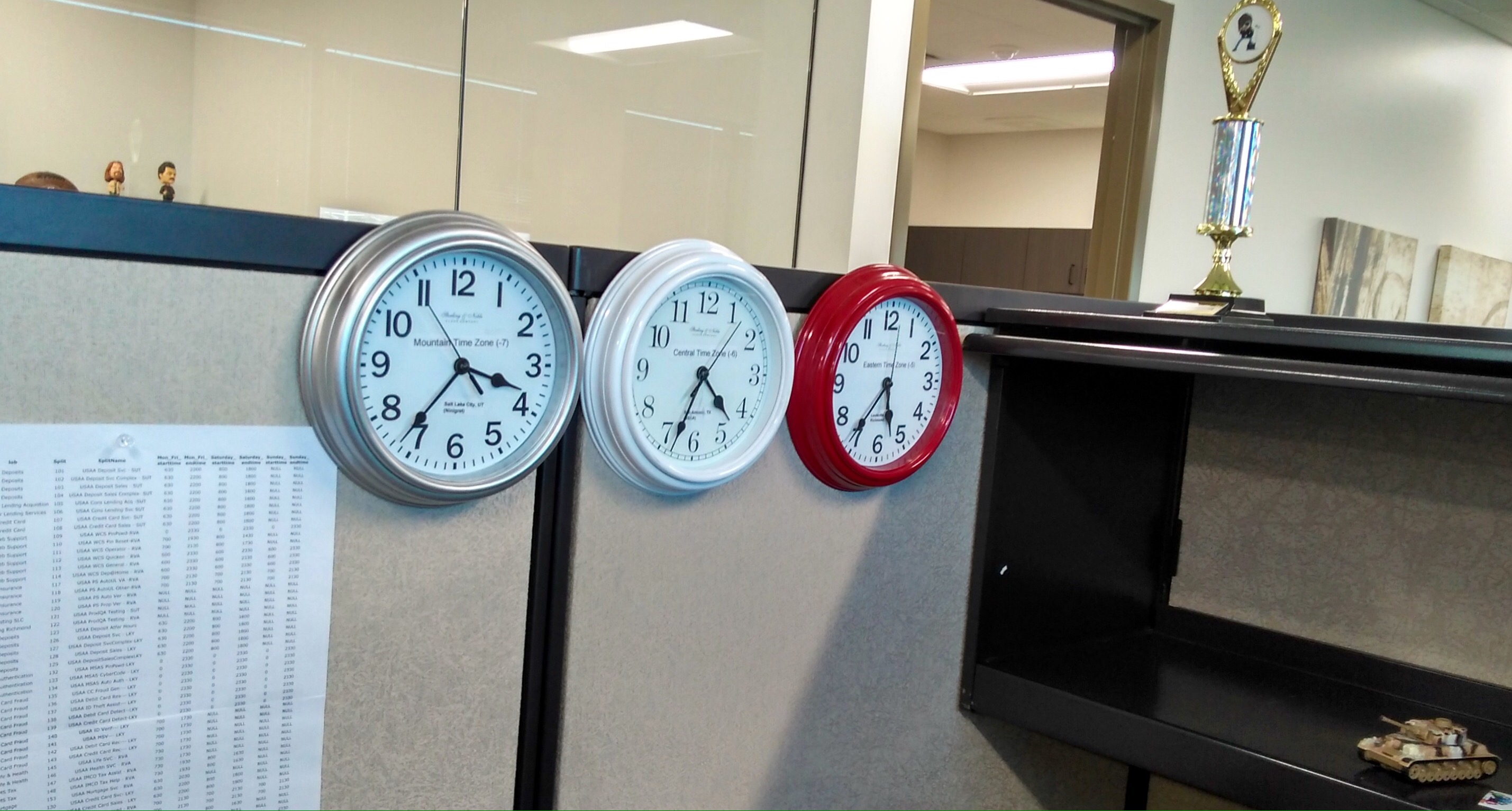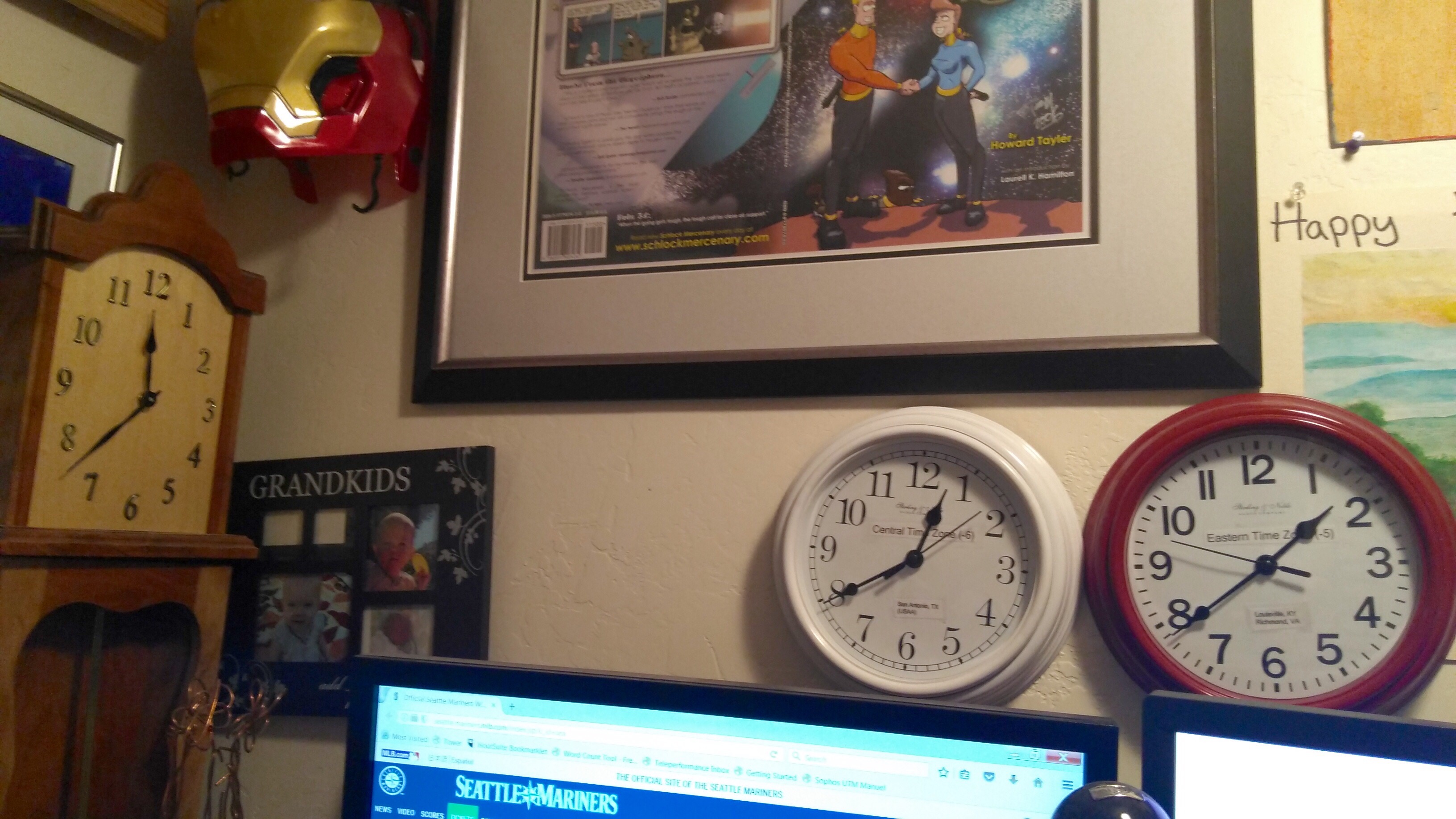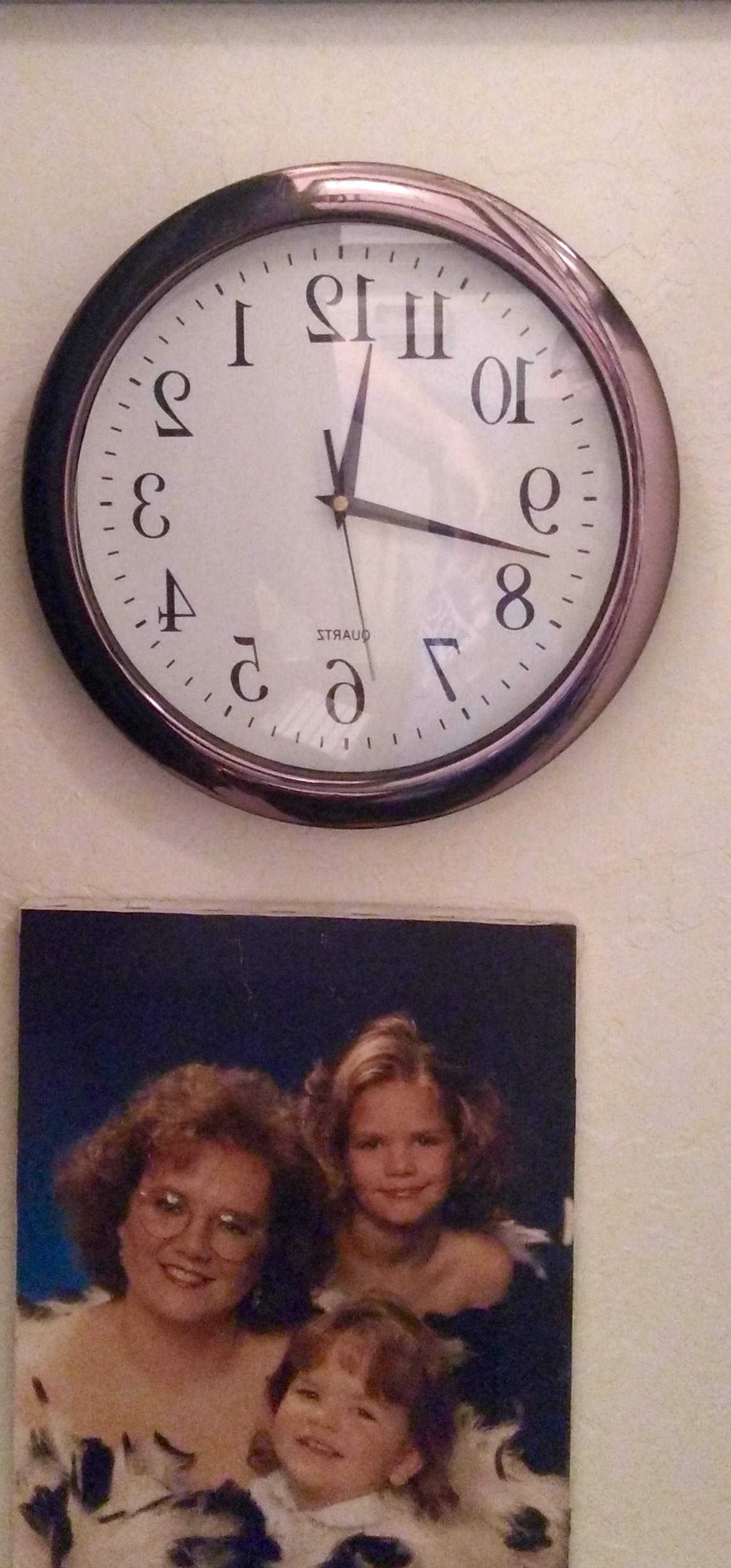Almost Done Resetting The Clocks
It sounded too strange to be true. A study in Oklahoma said that 4 out of 5 kids, 80% of the kids aged 6-12 know how to read an analog clock. In case you are one of those 80% or just a little rusty on clock terminology, an analog clock is one with a face. It’s round. It has those numbers around the edge. Interestingly, it’s where we get the term “clockwise,” meaning that if the clock were in front of you, if you start at the top and travel toward the right side. Counter-clockwise means you start at the top and travel to the left.
Clocks are where we get the term “half an hour.” An hour is when the large hand goes all the way around the clock face. A half hour means it only travels “halfway.” Unlike a digital clock that shows a “:30” for the half hour, an analog clock will have the big hand pointing at the number 6.
Is this really a thing? Are there really people who cannot read these? Are there people who read the first two paragraphs of this story and went, “Wow, I never knew that!”? Because, I’ll tell you, it feels pretty silly to be explaining how a clock works. Oh sure, of course I know how to read an analog clock. I’m old. But, it’s not just because I’m old that I know. I have a thing for clocks. It’s not anything weird, or obsessive, it’s just that I own a lot of analog clocks.
At work, I have three clocks above my desk. One is set for Mountain Time, (the time zone I’m in.) One is set for Eastern Time, (the time zone two of my call centers are in.) And one is set for Central Time, (the time zone one of my other centers and my client are in.) Of course, the clocks are each an hour apart.

I got the clocks because sometimes I’m on a call with one call center and they’ll say, “The problem started about 45 minutes ago.” It’s much easier to simply look at their clock and “wind back” the minute hand 3/4 of a turn than it is to do the math in my head. “Okay, they are two hours behind, and then add back 45 minutes. . no, that’s not right, take the 45 minutes off in addition to two hours?”
I like clocks. I have those three at my office. I have another three at my second office.

Then, I have three at my home office. The office clocks are about $5 at WalMart. The Mountain Time Zone clock in my home office is custom made.

My daughter made it for me for Christmas one year.
The problem with all of these clocks is daylight savings time. I have to reset these 9 clocks, plus the car, the microwave, my bedside clock, and my pocketwatch. (Yeah, it’s another analog clock. Maybe it is an obsessive thing.)
Daylight savings time kicked in last weekend. I’m almost done resetting my clocks. I have one more clock in my office.

It’s unique in that it runs counter-clockwise. Last year I never did get around to changing the time. Fortunately, this year it was already done.
We have other analog clocks around our house. My kids have been exposed to them since they were little and I’m pretty sure they can all read an analog clock. Telling time with that counterclockwise one might be tricky.
Rodney M Bliss is an author, columnist and IT Consultant. His blog updates every weekday. He lives in Pleasant Grove, UT with his lovely wife, thirteen children and grandchildren.
Follow him on
Twitter (@rodneymbliss)
Facebook (www.facebook.com/rbliss)
LinkedIn (www.LinkedIn.com/in/rbliss)
or email him at rbliss at msn dot com(c) 2017 Rodney M Bliss, all rights reserved

it is one thing to read an analog clock, its another thing to think in those terms.
I grew up with a dad with a similar fixation for clocks, except it was of the digital kind, to the point he made a couple of atomic clocks (really just a cesium oscillator kept at a constant temperature) with satellite displays around the house.
While I can read those sundial derived clocks, I still think in terms of time digitally. Example, I was to pick up my wife at the airport, she says her flight lands at quarter to two, my digital brain parsed that as two something, not one something, so I was still in the coffee shop nearby when she called to tell me she had arrived. I always need a few seconds to convert analog to digital, and in that case I didn’t have the time because of the total info dump from my wife at that time. She has learned since about how to tell me a time since we were raised with different time “languages”
Clearly how we measure time is not intuitive, but a learned thing. Even dates are affected. Is that date in the order of small-medium-large(DDMMYY) or medium-small-large(MMDDYY) that are the two common patterns / ‘defacto standards’ in the western world? That is why I stick with a good dejure standard of Large-medium-small (YYYY-MM-DD) of the ISO8601 standard as it also sorts so much easier.
Time: a subject of many songs